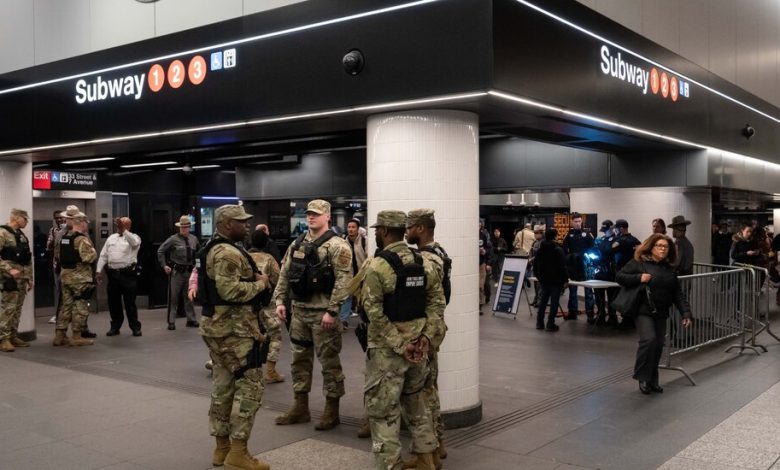Why the National Guard Can’t Ease All Fears About Riding the Subway

Last week, Gov. Kathy Hochul announced, to immediate controversy, that she would deploy 1,000 members of the National Guard and the State Police to patrol New York City’s subway system in an effort to help people feel safer. Explaining her reasoning on “Morning Joe,’’ she said the measure would serve as both a means of deterrence and a way to “change the psychology around crime in the city.” That psychology tilts toward pervasive fear in the aftermath of rare but dramatically violent incidents like the recent 3:40 a.m. attack on a train conductor in Brooklyn who survived a slashing to his neck after he stuck his head out of the window while pulling into the Rockaway Avenue station.
“I could show you all the statistics in the world and say ‘you should feel safe’ because the numbers are better,” Ms. Hochul said. And they are, essentially. Crime in the transit system fell in 2023 compared with the previous year even as ridership increased. Major crimes ticked upward in January before declining in February.
“But you’re the mom on the subway with your baby in the stroller, you’re the parent putting your kid on the subway to go high school, you’re that senior citizen going to a doctor’s appointment ” she continued. “If you’re anxious? Then I’m the governor of the State of New York, and I’m concerned about it.”
Of course, there are many reasons New Yorkers feel anxious that do not prompt swift and sweeping policy responses at the level of executive decree. The process of applying to city’s public high schools is hellish, and last year was one of the deadliest on record for cyclists, to cite just two examples. But the governor has made clear that shifting perceptions about the prevalence of disorder is not her only objective. There is a political motivation as well. “I am going to demonstrate that Democrats fight crime,” she also told Joe Scarborough and his crew, “so this narrative that Republicans have set, and hijacked the story that we’re soft on crime that we defund the police — no.”
It is unquestionably true that many New Yorkers worry about taking the subway now in a way that they did not before the Covid-19 pandemic, even if that worry does not always revolve strictly around crime but rather around the unease they experience witnessing so many people struggle with psychological instability on the trains.
Broad-based research tells us that only 3 to 5 percent of violent acts are attributable to mental illness. But erratic behavior is very visible in the transit system, and the death of Michelle Go, who was pushed off a platform into the path of an oncoming train at Times Square two years ago, changed the mind-set of many commuters, igniting a terror of recurrences. New habits soon formed; it is much more common now to see people congregating in the center of a platform, rather than the edge, as they wait for a train. Ms. Go’s assailant was ultimately deemed unfit to stand trial.



